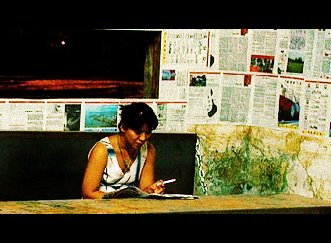|
Editing and Proofreading of Translations
Many translation buyers perceive them as interchangeable or identical aspects of translation. Some even believe that these aspects are unnecessary.
To be honest, in the world where everyone is looking to save time and money, little attention is paid to these underestimated aspects of translation. However, a new European quality standard for translation services adopted in 2006 (EN 15038 -Translation services. Service requirements) states that translation service providers should ensure editing of translations. As far as I can say from my practical experience, quality minded translation companies do ensure a complete quality control process: editing, revision, and proofreading. On the other hand, the truth is that too many translation service providers do not provide editing services yet. The misconception that editing and proofreading are the same thing is fed, probably, by translators themselves who often use both these terms in the sense of editing. In addition, self-editing and revision are also confused with editing. So what’s the difference? Self-editing is a procedure in which a translator checks his/her own translation for accuracy and style. It is the final step the translator does before sending the translation back to a translation company. Editing is careful reading of a translation by a linguist other than the translator for correction of errors and improvement of style, if need be. The editor compares the translation against the source text and makes any changes necessary to improve the quality of the translation. In some cases, the translator may receive the translation after it has been edited to approve or reject the editor’s changes. Revision is checking a translation by a client or a person (not necessarily a linguist) residing in a target country (a country where the translation will be used). The reviser checks the translation for overall quality, suitability for purpose, terminology consistency, style and register. A translation company may send the revised translation back to the editor to take a look at the changes and accept them if they are correct. If any of the changes are incorrect, the editor should insert a comment explaining why. Editing and revision are often made in the “track changes” mode in MS Word so that the changes can be tracked easily. Proofreading is checking a typeset copy by a translator, editor or nonlinguist native speaker before printing to ensure that no mistakes have been introduced in translated documents in the process of formatting and typesetting. Proofreading takes on special significance when a typesetter does not know the language of the translation or the client has introduced last-minute additions. The following diagram shows stages a document passes through on its way to becoming a translation, as well as parties involved in the translation process:
Everybody makes mistakes. Even the best translators make errors, in particular because of ridiculous deadlines or lacking expertise in the subject matter of the document to be translated, or not feeling quite fit all the time, every time, and on and on. Professional translators know that qualified editing and proofreading can't do anything but improve the quality of their translations. Implementing the quality assurance process (editing + revision + proofreading) considerably improves chances of translation buyers to get the translation that works. There is a misconception that editing and proofreading are very expensive. Much less expensive, it must be said, than translation errors in marketing, legal or medical documents, for example. Didn't find what you were looking for? Use this search feature to find it. Return from Editing and Proofreading Page to Home Page
|
Professional proofreaders and editors, who are native speakers of English, will help you to polish your business documents, scholarly papers, speeches, essays, brochures, advertisements, etc. The service is confidential and the price is very competitive. Find out more here! Would you like to build a solid, long-term future for yourself? If yes, keep on reading. Building an online business as a source of extra income was my long-standing dream. I tried two free and one paid web site builders but failed. Not because of my ignorance of HTML codes, but because of the lack of proper tools for and basic knowledge about building business online. However, what was once a pipe dream, now is happening. How come? My answer is "Site Build It!". Watch the TV program below for more details. If you are serious about building a stable future for yourself and your children, ACT NOW:
|







